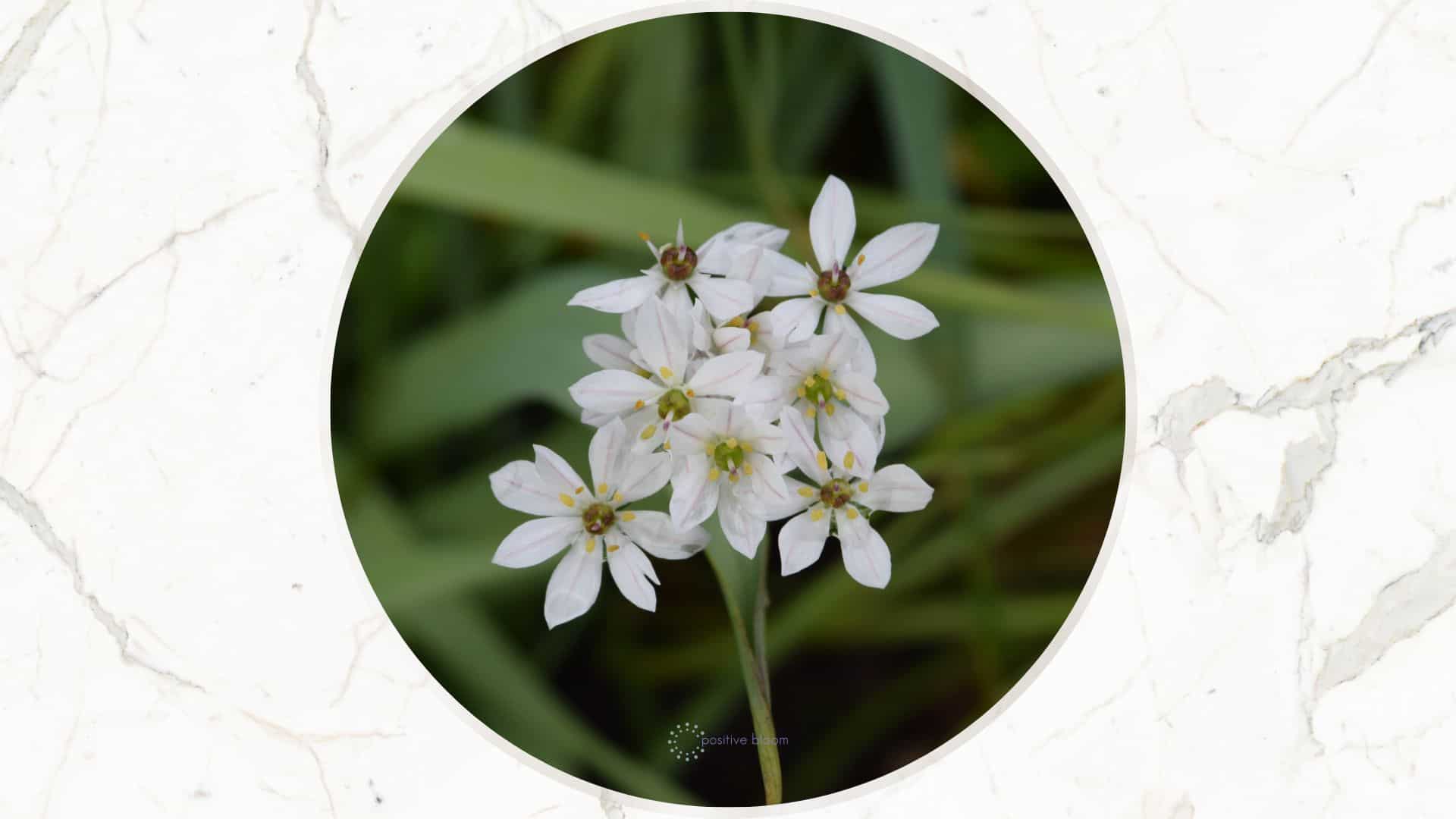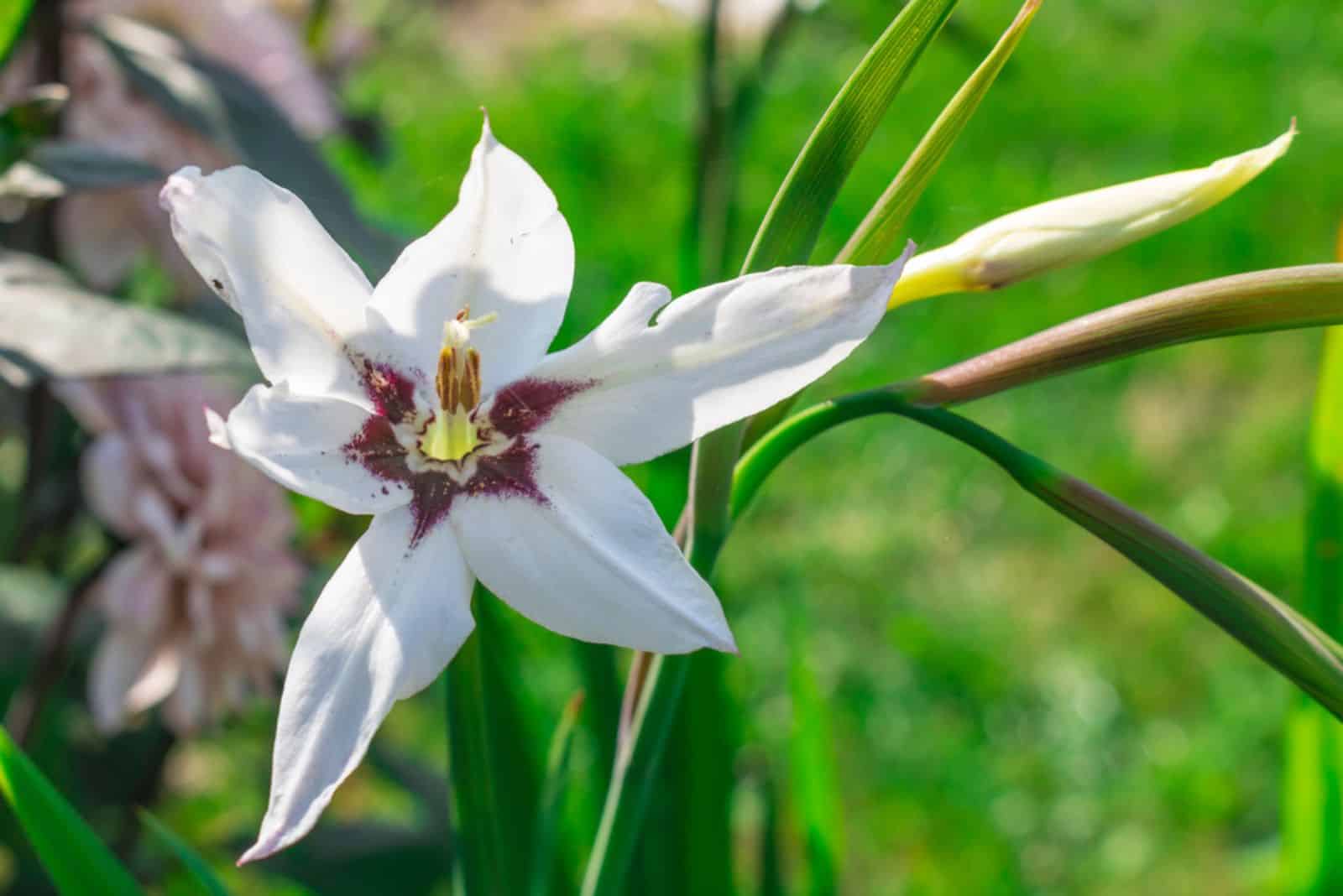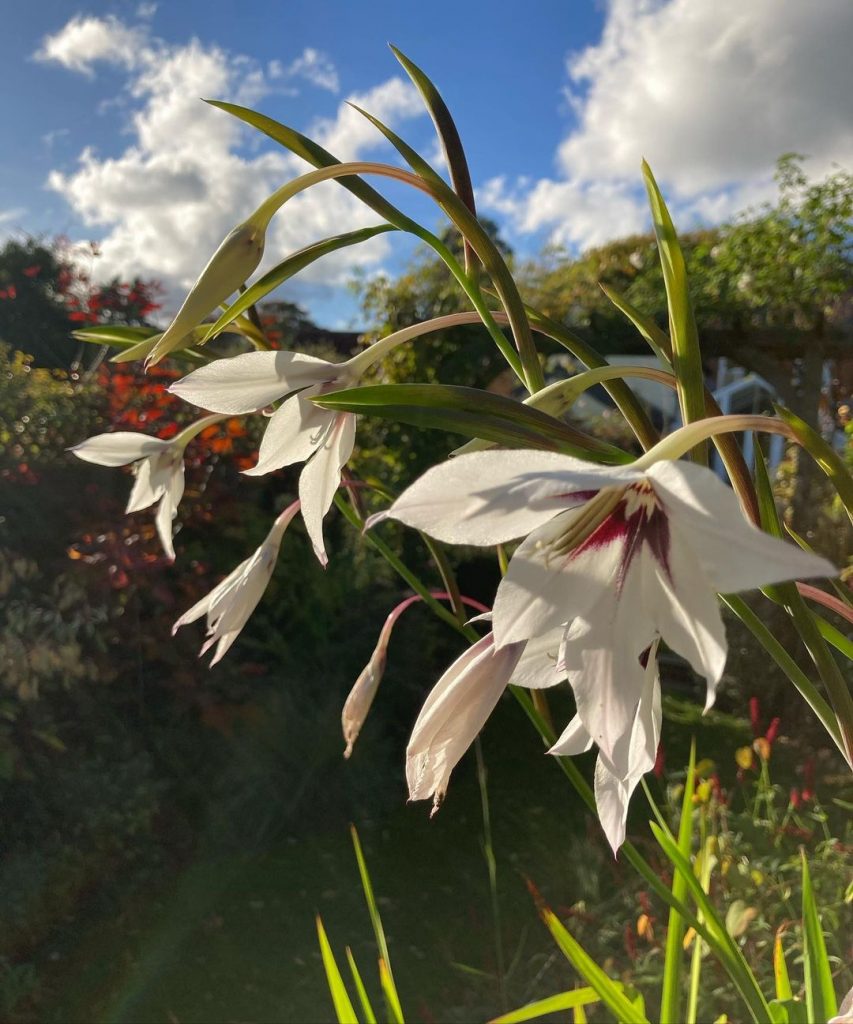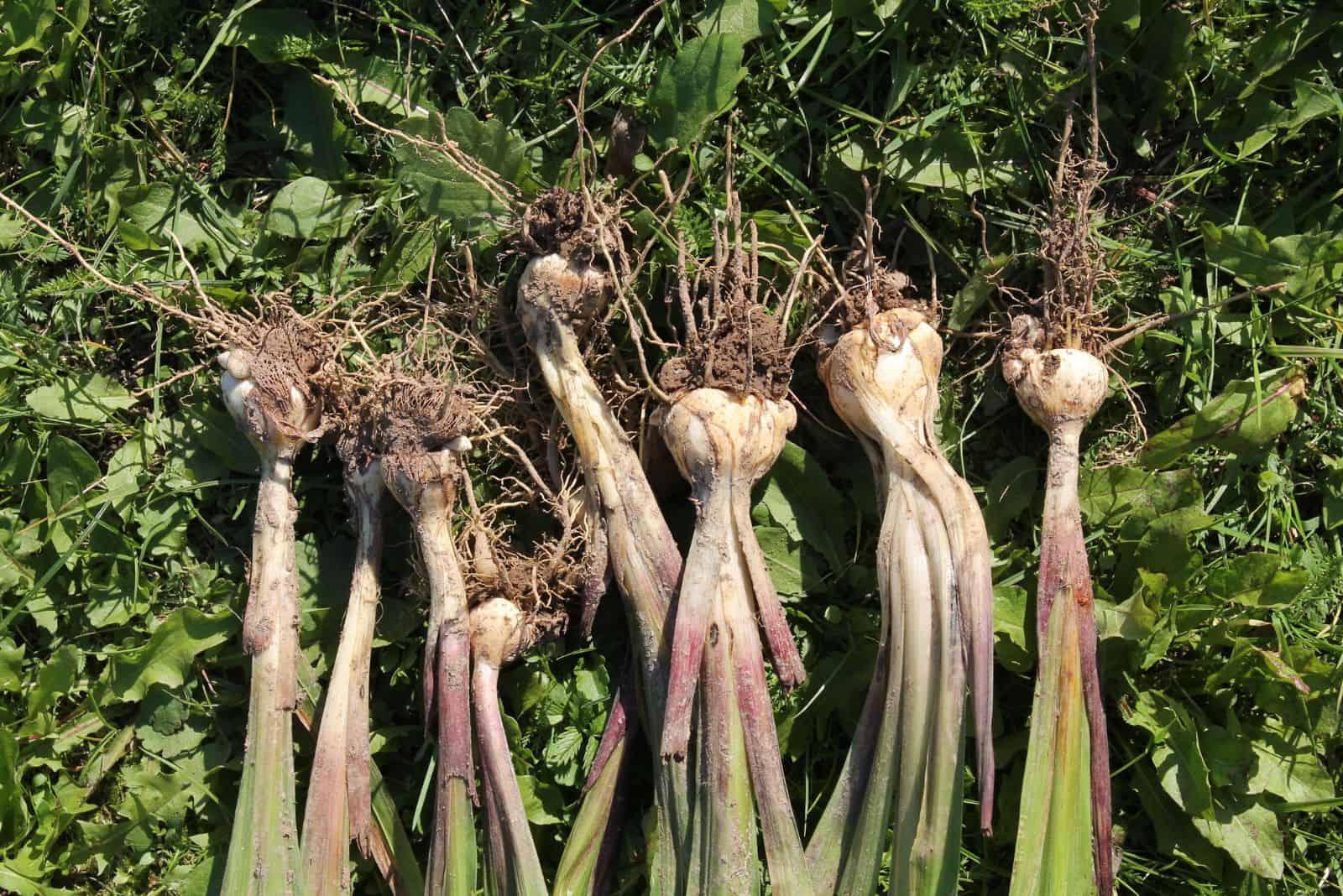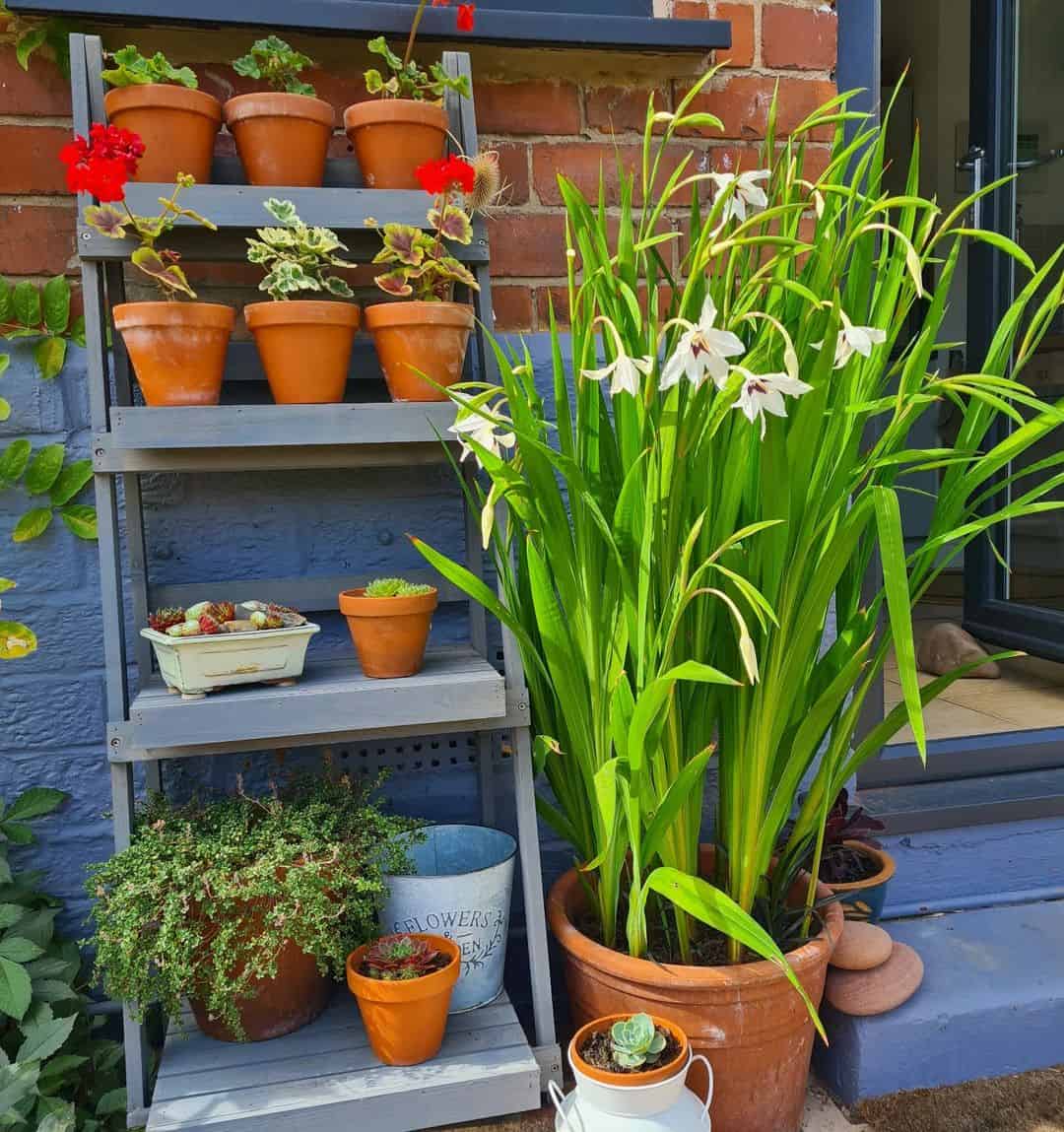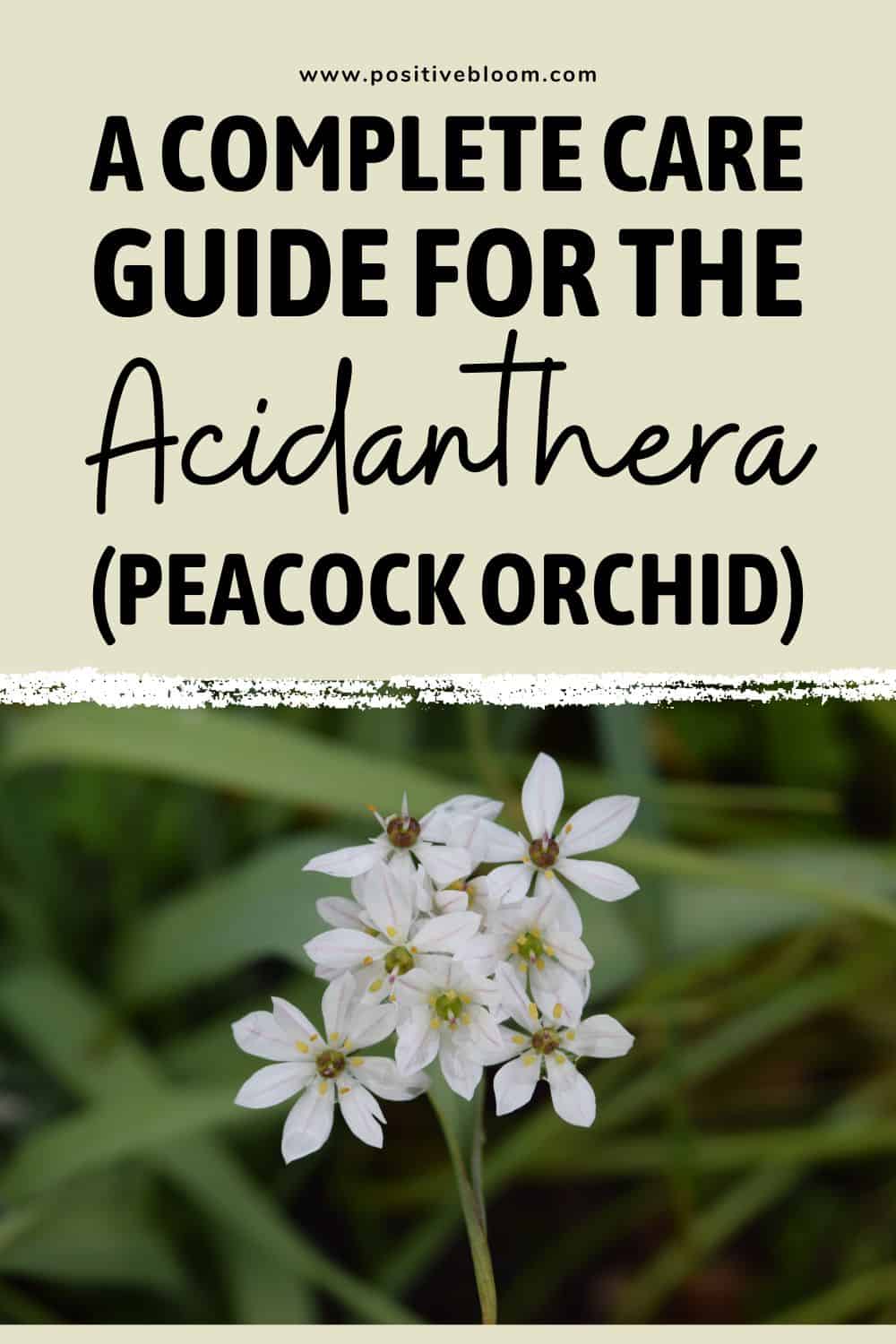It’s not uncommon for plant names to be confusing. Some plant species have many nicknames, but there is sometimes even confusion between botanical names.
One of the best examples is the Acidanthera, scientifically known as Gladiolus murielae. You’ll come upon other names it goes by like Peacock orchid, Abyssinian glad, or even Gladiolus callianthus as a botanical name.
It may be confusing when it comes to its names, but its appearance makes the plant truly unique.
Its star-shaped blossoms and sword-like foliage will fit perfectly in any garden.
In this article, I’ll tell you more about Peacock orchid features, planting and care instructions, propagation methods, and common problems.
Before we move on, let’s see some basic info about the Acidanthera plant:
[table id=574 /]
Let’s get started!
What Is The Acidanthera?
What makes the Acidanthera, aka Peacock orchid, so special? For starters, it’s not an orchid, and in my humble opinion it’s even prettier (sorry, orchid lovers).
It produces magnificent white flowers that resemble stars. The blossoms are fragrant and grow on slender stems. Their throats come in deep purple, which perfectly combines with white.
Pollinators, especially bees, seem to love these fragrant flowers, and that’s one more reason to grow the plant.
Gladiolus flowers are thought to represent strength. Additionally, they are well-known French flowers.
The sword-like foliage is another excellent feature that adds beauty to this unique plant. Gladiolus plants are commonly referred to as Sword lilies, and now you know the reason!
The blooming season lasts about a month, so you can have cut flowers for bouquets for a long time. I recommend growing your Peacock orchids near some spring bulbs such as tulips.
Although many refer to these plants as summer bulbs, they are actually corms.
Peacock lilies typically reach 3 feet tall if given the right conditions.
You need to pay attention to where you plant your Acidanthera because all its parts are toxic to humans and pets.
Gladiolus murielae vs Gladiolus aequinoctialis
Many growers mistake Peacock orchids for the Gladiolus aequinoctialis plant. The latter is native to West Africa and typically grows taller.
If you meet the aequinoctialis care requirements, it’ll reach 4 feet tall. The leaves of this species are larger, and it produces fewer blossoms than the Sword lily.
The leaves of the Acidanthera murielae are also smoother, and veinings aren’t as accentuated as with the aequinoctialis species.
The flowering season of the aequinoctialis plant starts later.
How To Grow An Acidanthera Murielae
Peacock orchids, aka Acidanthera plants, are easy to grow and perfect for novice gardeners.
Full sun, fertile and well-draining soil, and slightly warmer temperatures will encourage your Acidanthera plant to grow healthy and produce an abundance of magnificent flowers.
Let’s see more details about planting and caring for this Sword lily plant.
How To Plant Acidanthera
First, you need to choose the right time to plant your Gladiolus.
It would be best if you planted your Sword lily when the soil temperatures rise above 50 degrees Fahrenheit (after the danger of frost passes).
Regarding the planting time for container cultivation, you can start a month before the last frost.
When it comes to planting depth, dig holes that are approximately 6 inches deep; if the Peacock lily’s corms are bigger, plant them deeper.
Also pay attention to spacing; each corm should be approximately 6 inches apart.
You may need to water more often in the first growing season.
How To Care For Peacock Orchids
Your Peacock orchid doesn’t need much to thrive, so just ensure the conditions below, and you’ll be enjoying new growth from late June to early fall.
Light Requirements
You must ensure at least 6 hours of full sun per day for your Gladiolus to complete its growth stages.
Partial shade may also work fine, but if you notice delayed bloom time, consider giving your Sword lily more light.
If you don’t have a sunny spot in your outdoor garden, you can grow your Sword lilies in containers so that you can control conditions.
Temperature And Soil Requirements
Acidanthera plants are hardy in USDA zones 7 and above. If you live in colder climates, you can cultivate your Abyssinian Gladiolus in a container outdoors and take it inside to overwinter.
If you’re afraid the first frost will kill your plants, add a layer of mulch to protect them.
These plants thrive in many soil types, as long as they’re well-draining. Loamy or sandy soil types will keep your gladiolus healthy and happy. Just add compost or other organic matter to the soil to ensure there are enough nutrients.
Acidanthera corms don’t tolerate heavy soils, and could quickly suffocate if the soil moisture content is too high.
Watering & Fertilizing
Your Acidanthera will need frequent watering during the first growing seasons. Once the plant is established, it will need about an inch of water weekly.
Of course, if the temperatures are high and it doesn’t rain frequently, you’ll need to water your gladiolus more often.
You can add 5-10-10 fertilizer to the bottom of the hole before planting your gladiolus (late spring to early summer).
How To Propagate The Abyssinian Gladiolus
The best and easiest way to propagate Sword lilies is by corm division. These plants produce so-called cormlets.
Once the growing season ends in late summer, take the corms out of the ground and allow them to dry well.
Loosen the soil surrounding the corms and put them into trays.
After approximately two weeks, divide the cormlets and place them in a dark, cool spot.
You can plant them the following spring, but don’t expect them to produce flowers in the first season.
Peacock Orchid: Common Issues
You shouldn’t have many problems when cultivating Acidanthera bulbs.
Botrytis fungi may attack your Acidanthera plant and cause its flowers to become brownish or develop brown patches.
Other fungi may cause the rotting of corms, especially when overwintering.
The easiest way to avoid this is to check the health of your corms and store them in a cool location with low humidity.
Thrips are the biggest problem of Sword lilies. They’ll attack the corms when overwintering and leave scratches.
You can prevent thrips from infesting your plants by treating the corms before storing them.
Suggested Uses
Here are some great ways to use Acidanthera plants:
1. Cut flowers: The blooming season of this plant lasts for a pretty long time, so its cut flowers can adorn your dining table throughout the summer months. Due to their magnificent color and shape, Acidanthera flowers are an excellent choice for bouquets.
2. Borders: It may be pretty hard to find long-blooming plant varieties for borders. These flowers look amazing when planted and arranged in clusters as border plants.
3. Raised beds: If you want to accentuate the beauty of your Peacock orchid, plant it in a raised bed. Make sure you water the soil more frequently. Combine them with other flower bulbs, such as daffodils and tulips.
4. Container gardening: These plants are a great choice for large pots. The best thing about this way of cultivation is that you can control the conditions, meaning that you can take your gladiolus indoors if temperatures are too low, or you can transfer it to a sunnier spot.
Wrapping Up
We are constantly looking for new plants to add to our flower gardens, and the Gladiolus species is always a great choice.
The Acidanthera is a truly unique plant, and its white, star-shaped flowers will leave everyone breathless.
Luckily, these are easy-to-grow plants, and they’ll reward you with unique flowers even with a little bit of neglect.
If you have small children or pets, pay attention to where you plant your Acidanthera, as all its parts are toxic if ingested.
Until next time!
Like this post? Share or pin it for later!

